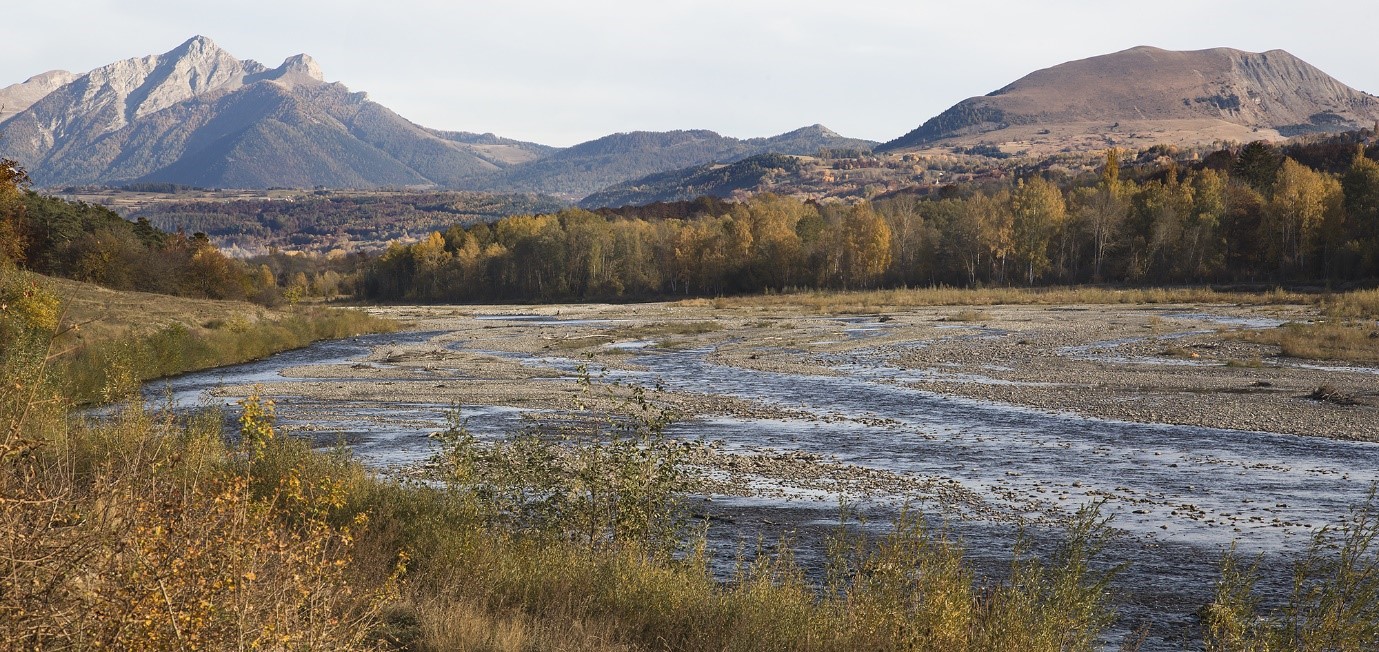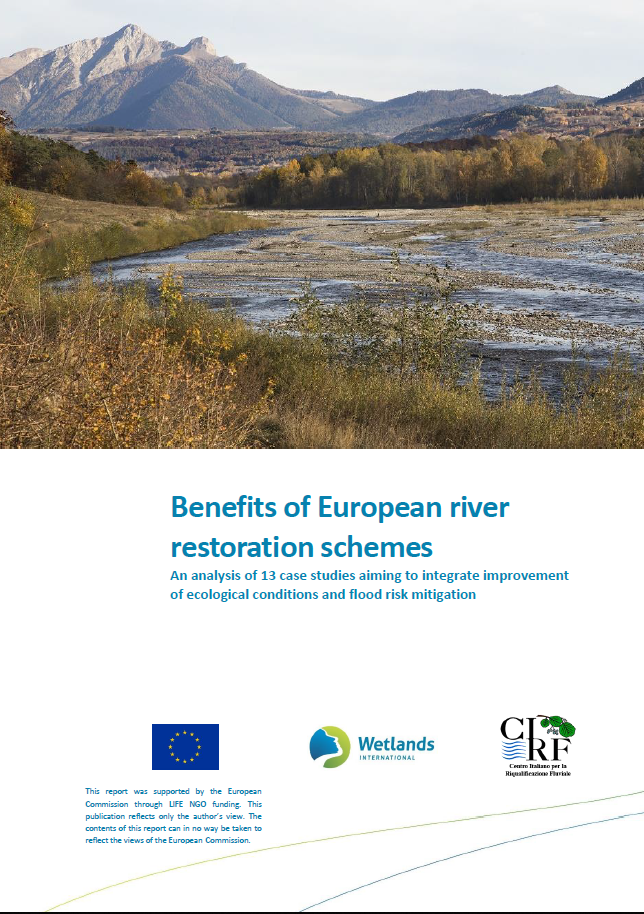
Benefits of European river restoration schemes
River restoration refers to ecological, physical, spatial, and management measures and practices aimed at restoring a more natural state and functioning of the river system in support of biodiversity and of several key ecosystem services, such as flood and drought risk mitigation, aquifer recharge, nutrient retention, recreation. River restoration is an integral part of sustainable water management and directly supports the aims of the Water Framework Directive, as well as of national and regional water management policies.
Two main drivers often trigger river restoration measures, namely improving the ecological status of water bodies and biodiversity, and reducing flood risk. However, evidence of the effects of River Restoration measures in relation to both these objectives (“integrated restoration measures”) is still limited. Wetlands International – European Association and the Italian Centre for River Restoration (CIRF) present a review of 13 case studies from across Europe aiming to integrate improvement of ecological conditions and flood risk mitigation.
The goals of this review are to confirm whether tangible examples of “integrated restoration” are available for all the main categories of such measures and to verify to what extent evidence of effects and benefits is available. Rather than being exhaustive, this review aims at fostering the discussion on measures for integrated restoration. We welcome feedback and recommendations on additional evidence of the benefits of integrated River Restoration measures.
Header image © Bruno Boz

